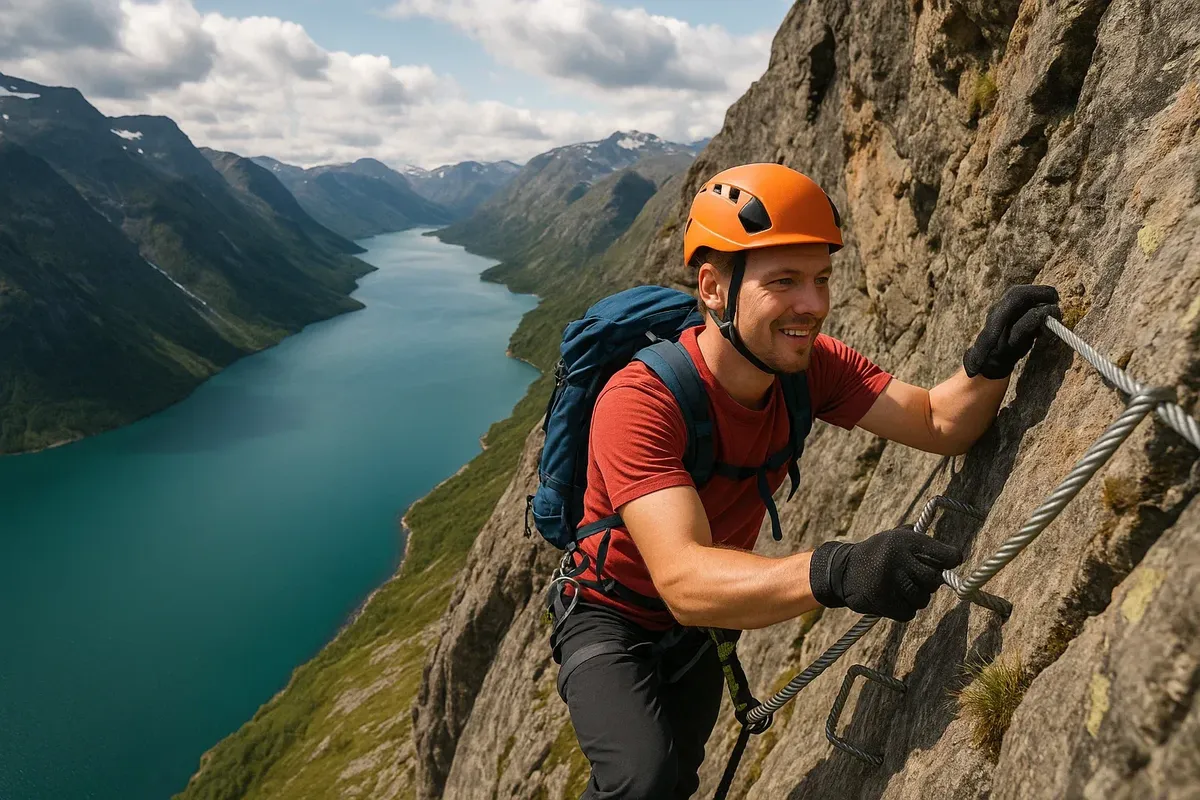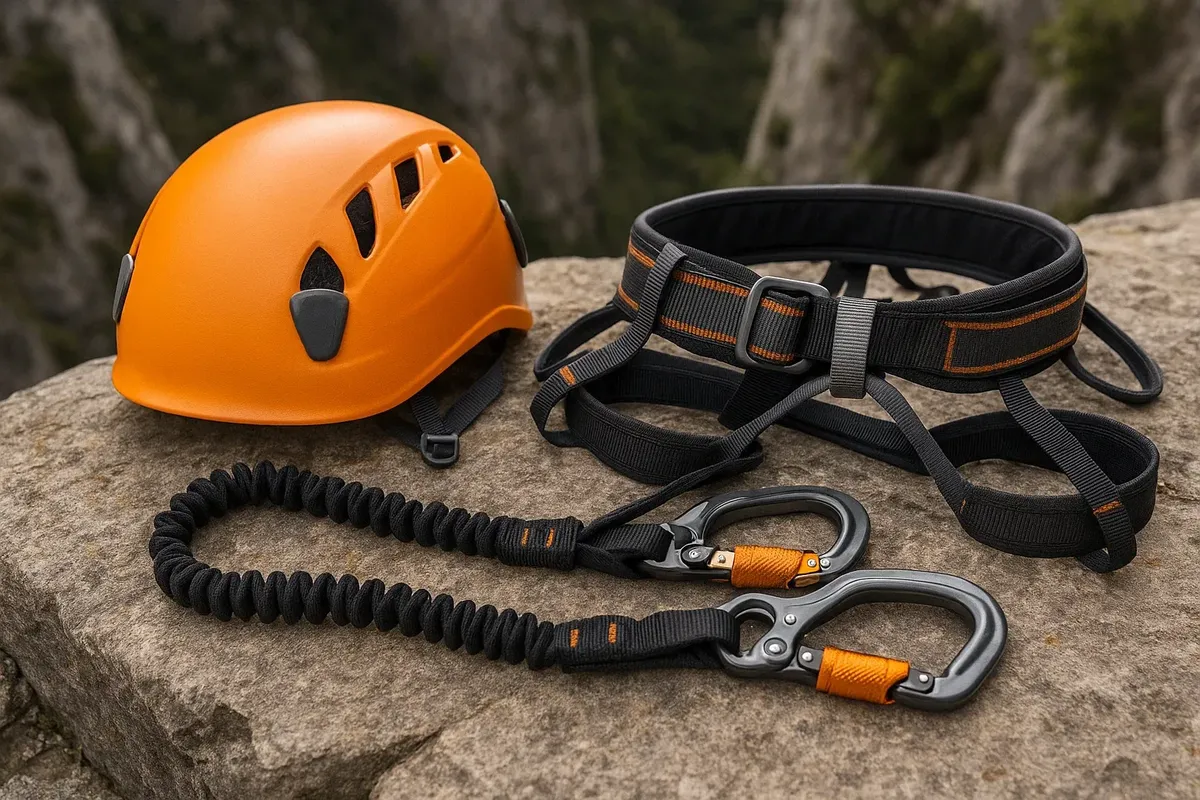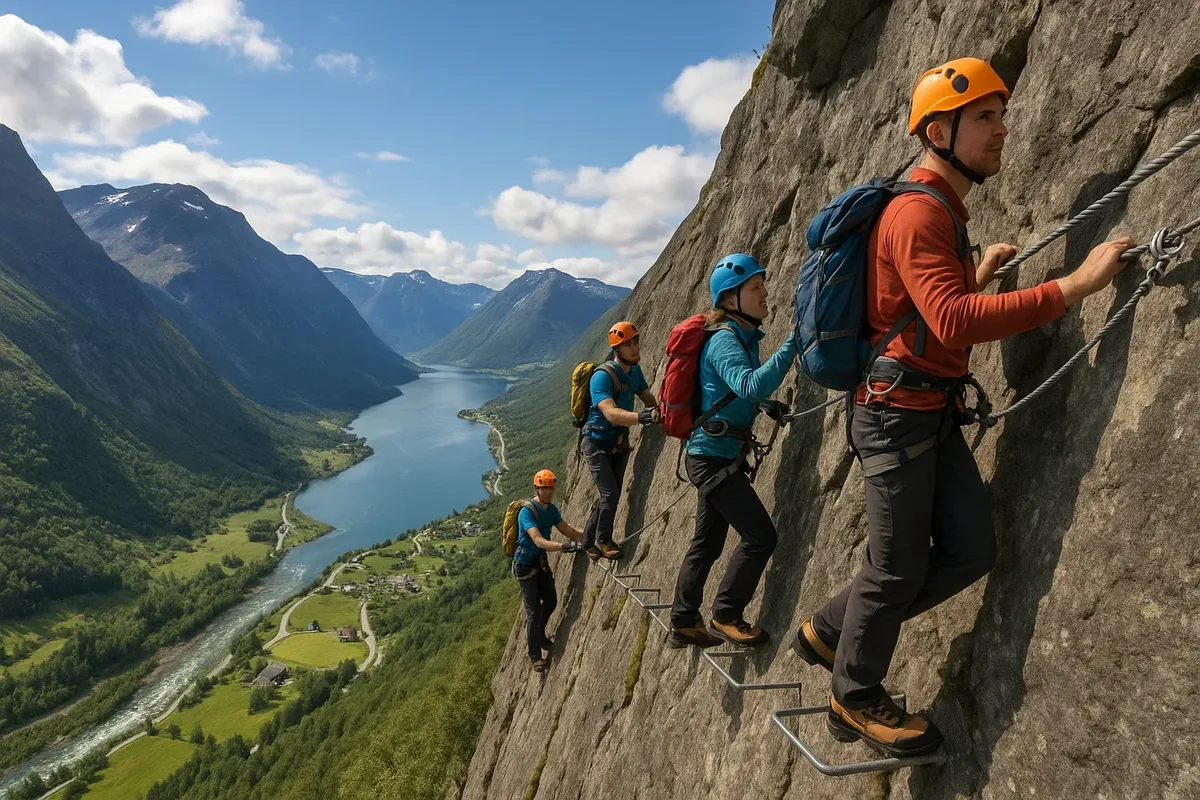🧗♂️ Via Ferrata in Norway: when the trail turns vertical ⚡
Get ready for the experience of a lifetime on the hiking trails of Norway's spectacular national parks! These trails are not just for leisurely strolls – they're adventure waiting to happen! If you're after more excitement and amazing views, then look no further than the incredible via ferrata routes! These incredible features transform any trail into an exhilarating vertical adventure, making every journey unforgettable. We've found the absolute best places, given some top safety advice and explained what equipment you'll need.

Why is Jotunheimen National Park so popular for via ferrata?
Jotunheimen is famous for its classic hikes and impressive via ferrata routes, such as the climb to the top of Mugna near Lake Jende. Here you will experience a unique combination of adrenaline from the heights and incredible mountain panoramas that you can't see from ordinary trails.
What is via ferrata and how do you tell the difference between the different levels of difficulty (C and D)?
Via ferrata (Klettersteig) is a mountain route equipped with steel cables, steps and ladders that tourists climb using special equipment. Level C means the route is moderately difficult, but still easy enough for fit beginners. Level D is hard. You need experience, to be in good shape and to have the right technique for the vertical parts.
What equipment do you need for via ferrata?
The via ferraa set you must wear includes a helmet, a safety harness and special lanyards that absorb shocks and attach to the cables. On average, it costs around 300–400 Norwegian kroner (about £30–40) per day to rent a full set.

What safety precautions should you take on a via ferrata?
You must always use special safety equipment and never unclip yourself from the safety rope. Take the route with an experienced guide or at least in a group of two or more people. Check the weather forecast carefully and avoid going out in rain, snow or strong winds.

Which animals might you meet while climbing?
When you go on a via ferrata in Jotunheimen and Rondane, you might see reindeer, moose or birds of prey like golden eagles and sea eagles. These sightings most often happen in remote areas of the routes, so remember to keep your distance and avoid loud noises.
Which campsites or huts are close to the via ferrata for overnight stays?
The Gjendesheim hut and Odda Camping are great places to relax and spend the night before and after your via ferrata adventure. They are close to the routes, so you can plan your trip easily and rest after your climb.
What do you need to think about when you try a via ferrata for the first time?
For your first time, choose routes rated C or lower. Bring a guide or an experienced partner with you to feel confident on the route. Don't forget gloves, comfortable shoes and protective eyewear (if it is windy or sunny).
What is the best way to get fit for a via ferrata?
It is a good idea to regularly train your stamina and arm strength, as via ferrata routes require you to push yourself during the climb. Rock climbing, pull-ups and general physical training will help you complete the route with confidence and enjoy it.
Prepare for the ultimate challenge on the steep slopes of Norway's spectacular national parks! Prepare well, use the right equipment and understand how difficult it is going to be, and you will get amazing photos and unforgettable memories.
Have you tried via ferrata in Norway? We can't wait to hear what you thought, what tips you have and to see your photos! We'll be publishing the best stories and photos in our catalogue to inspire other travellers to try daring vertical adventures.





2 comments
Log in to leave a comment